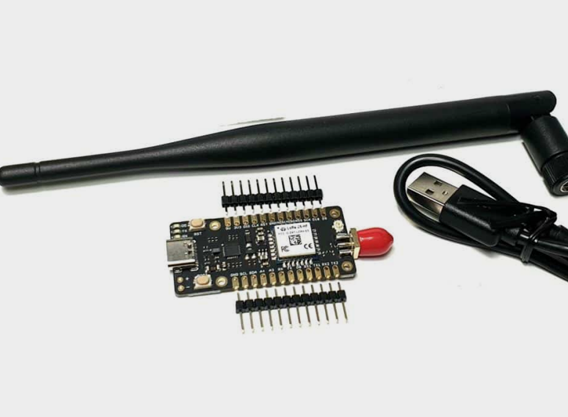

LoRa antennas are used to transmit and receive wireless signals for LoRa devices and networks. LoRa stands for Long Range and refers to a spread spectrum modulation technique that enables long-range communications over unlicensed spectrum. In this article, we discuss what LoRa is, the radio frequencies used, types of LoRa antennas, key antenna characteristics, matching considerations, and usage examples.
Overview of LoRa Technology
LoRa is a physical layer RF modulation protocol developed by Semtech. Key attributes:
●Long range communication links
●Low power consumption for remote battery devices
●Robust data transmission resistant to interference
●Operates in unlicensed ISM bands
●Enables large-scale Internet of Things networks
●Bidirectional communication with mobile or fixed assets
●Range can exceed 15 km in rural areas
●Open standard used widely by industry
LoRa now serves as the PHY layer for the LoRaWAN protocol stack focused on LPWAN IoT connectivity for sensors, actuators, trackers, and monitors. This is driving adoption of LoRa-compatible antennas.

Common unlicensed LoRa frequency bands:
433 MHz – Used primarily in Asia. Allows longer range but lower data rates.
868 MHz – Main band for Europe. Good range with reasonable data rates.
915 MHz – North America band offers a balance of data rate and range. Australia uses 915-928 MHz.
2.4 GHz – Short range but higher data rate for sensors. Restricted in some regions.
So LoRa antennas target the sub-GHz license-free ISM bands ideally suited for long range coverage. The exact frequencies depend on geographic region.
Types of LoRa Antennas
There are several common antenna form factors compatible with LoRa radios:
Omnidirectional Whip and Dipole
●Half-wave monopoles or dipoles
●Radiate uniformly in azimuth
●Simple, compact form factor
●Screw mount or permanent attachment
●Ideal for small, mobile LoRa devices
External Terminal
●Detachable antenna via coax cable
●Easy repositioning and reorientation
●Allows remote mounting for improved coverage
●Added cost of coax cable and connector
●Common for fixed gateways and infrastructure
PCB Trace Antennas
●Meandering PCB traces as integrated antennas
●Low cost but less efficient than external antennas
●Used when minimal footprint is critical
Performance very dependent on PCB layout
Ceramic Chip
●Multilayer ceramic package with embedded antenna
●Compact SMT component for PCB integration
●Lower cost than miniaturized antennas
●Reduced performance compared to larger antennas
In general, fixed infrastructure utilizes external antennas while mobile LoRa endpoints more commonly employ whip or chip antennas.
Key Antenna Characteristics
Critical parameters for a LoRa antenna include:
Frequency – Must match LoRa band in use, typically 433 MHz, 868 MHz or 915 MHz.
Gain – Amplification over isotropic, higher gain equals longer range. 1-5 dBi typical.
VSWR – Voltage standing wave ratio, 1.5:1 or less is optimal impedance match.
beamwidth – Angular radiated region for directional antennas.
Polarization – Orientation of electric field – vertical, horizontal or RHCP/LHCP.
Cable loss – Loss in coaxial feed line, 1-2 dB common.
Size – Form factor constraints, gain often correlates with size.
Matching the antenna characteristics to the use case and installation is vital for optimal LoRa performance.
Antenna Types Comparison


LoRa Antenna FAQs
What are the most common LoRa antenna types?
The most prevalent LoRa antennas are quarter-wave whip antennas, helical antennas, PCB trace antennas, ceramic chip antennas, and directional Yagi antennas. Dipole and collinear antennas also see use.
What is the difference between linear and circular polarization for LoRa?
Linear polarization aligns the electric field in one plane, either vertical or horizontal. Circular polarization rotates the field in a helix, making antenna orientation less critical for endpoint communication.
How does antenna gain relate to range for LoRa?
Higher antenna gain in dBi extends the communication range for a given transmit power level. Each 3 dBi increase approximately doubles the range under line of sight conditions.
What cable type should be used for gateway antennas?
Low-loss coax cable such as LMR-400 is recommended for gateway antennas when runs are less than 5 meters. LMR-600 can be used for longer cable lengths.
What are recommended surge protection methods for LoRa antennas?
A coaxial lightning surge protector matched to the antenna feedline impedance should be used. DC grounded mounting brackets also help shunt current from lightning strikes.
Contact: Diana Xie
Phone: 86-15815571536
E-mail: sales@global-antenna.com
Whatsapp:8615815571536
Add: Room826, Floor 8,BLDG 13, University Science Park(East), Zhengzhou City, P.R.Henan, China.Zip Code: 450000